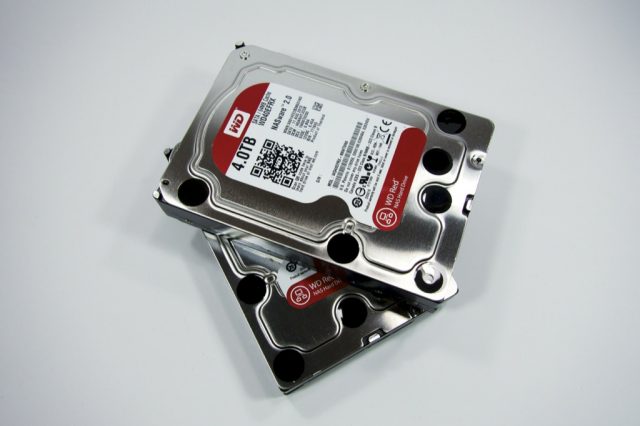 SSDs are the rage these days. But they are still relatively costly for the bulk of your massive digital storage needs. Think photo archives, video libraries, and other media repositories. Most people still rely on traditional spinning hard disks for their mass storage. But what if you want to “upgrade” from your traditional desktop file share?
SSDs are the rage these days. But they are still relatively costly for the bulk of your massive digital storage needs. Think photo archives, video libraries, and other media repositories. Most people still rely on traditional spinning hard disks for their mass storage. But what if you want to “upgrade” from your traditional desktop file share?
Western Digital, like other hard disk manufacturers, have started to target the Network Attached Storage (NAS) market for a while. Their latest update include new 750GB and 1TB 2.5″ Red drives and topped up the capacity for their existing 3.5″ Red drives to 4TB. This Red line is Western Digital’s branding of their NAS hard disk drives.
What makes a NAS drive different from other drives? Firstly, they are generally rated for higher reliability than desktop drives, because these are typically run non-stop. They generally spin slower, because this will mean lower power consumption, which is something you may be concerned about when running non-stop. The lower spindle speed also means less heat, less vibration, and less noise. Yes, also lesser performance. But in a NAS, your bottleneck is going to be the network, and you’re supposed to use them as your secondary storage. Speed, thus, is not a major requirement.
I received a pair of the 4TB 3.5″ Red drives for review. They come with SATA 6 Gbps interfaces, 64MB of cache, and spin at 5400 RPM. Western Digital uses the IntelliPower moniker to refer to the 5400 RPM. In case you’re wondering, IntelliPower is Western Digital’s marketing speak for rotational speed that is fine-tuned to deliver a balance of power savings and speed, and the real speed is fixed depending on the drive model. I know, techies like me would rather just know the actual RPM.
That NAS drives actually spin slower than conventional desktop drives came as a surprise to me. But I suppose this performance penalty might be mitigated if you run your NAS in a RAID 0 configuration (disk stripe). You can also put this in a DIY home server and configure a RAID 0 set. If you recall, RAID 0 disks distribute data blocks across two or more drives, so reading will pull data from multiple disks simultaneously.
Another way to look at it is that NAS boxes are already choked by their network interface, so there’s a limit to how much performance you need out of these drives. I’ve mentioned this above. As a NAS, you probably shouldn’t be expecting high performance. You use these disks for bulk storage, backups, and to archive stuffs.
Would you go for a Red NAS drive?

using the red 7.2k, very good